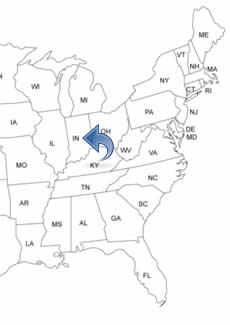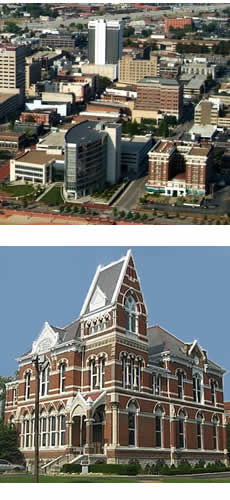INDIANA PEOPLE SEARCH!
- ✔ Contact Info
- ✔ Phone Numbers
- ✔ Criminal Records
- ✔ Income Info
- ✔ Neighbors
- ✔ People's Age
- ✔ Property Ownership
- ✔ And Much More
Evansville, Indiana
Evansville is located in the southwestern part of Indiana and is the third largest city in the U.S. State of Indiana. In 2004 Evansville was named an All-America City by the National Civic League. In 2008, the readers of Kiplinger, voted the city to be the best city in the country in which to live, work, and play. The city has several well-known schools. The riverboat Casino Aztar is a popular attraction in the region. The new downtown arena opened in late 2011.
To See And To Do In Evansville
- Evansville Museum of Arts, History & Science
- Mesker Park Zoo
- Angel Mounds State Historic Site
- Garvin Park
- Koch Family Children's Museum of Evansville
- Reitz Home Museum
- Casino Aztar Riverboat Casino
- LST 325 World War II Warship
History Of Evansville - Timeline
Until 1804, French hunters and trappers traveled to Evansville to trade with the Shawnee. In 1812, Colonel Hugh McGary, the founder of Evansville, purchased 200 acres from the federal government and built a cabin at the foot of present-day Main Street, where he started a ferry boat service.
In 1818, Colonel Hugh McGary sold a section of land to General Evans. He named the place to Evansville in 1819. In 1821, The Presbyterians established the first church organization in the village. In 1836, Evansville was made the southern terminus of the Wabash & Erie Canal.
In 1847, Evansville was incorporated as a city. In 1850, the railroad reached the city. The canal was completed in 1853. Also in 1853, Evansville's first railroad company, Evansville & Crawfordsville Railroad, was opened. In 1854, the University of Evansville was established. In 1857, a daily mail route was established.
In 1871, the "Lumber Baron" John Augustus Reitz, built his house located in the Riverside Historic District in downtown. (Today's Reitz Home Museum). In 1885, a steel railroad bridge was built across the Ohio River to Kentucky. In 1890, the Old Vanderburgh County Courthouse was completed and more than 50,000 people lived in Evansville. Many of them came from Europe to work in the local factories and foundries. In 1892, the city had electric street cars.
In 1904, the American Trust and Savings Bank building was completed. In 1913, the Masonic Temple building was completed. In 1915, the baseball stadium "Bosse Field" opened. In 1916, the first steel frame skyscraper was constructed. It was originally home to Citizens National Bank. In 1921, the 1,950 seat "Victory Theatre" opened. In 1928, the Mesker Park Zoo was established. In 1932, the first highway bridge to cross the river and connect Evansville with Henderson, Kentucky was built.
The Ohio River flood of 1937 took place in early 1937 in Evansville. With damage stretching from Pittsburgh to Cairo, Illinois, one million persons were left homeless, with 385 dead and property losses reaching $500 million. Evansville built a system of earth levees, concrete walls, and pumping stations to protect the city. In 1938, the discovery of oil helped Evansville out of the depression. On November 6, 2005, a tornado struck Evansville and killed 25 people. In 2011, the multi-use indoor arena "Ford Center" opened.

